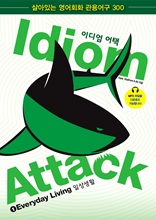Cover
About the Author
Title Page
Dedication
Copyright
1 Everyday Living 日常生 活
Getting Used to Idioms
Preface
How to Use this Book
Table of Contents
01 From Beginning to End 처음과 끝
02 In the Morning 아침에
03 In the Evening 저녁에
04 Moments in Time 순간
05 Weather Conditions 날씨
06 Going to School 학교
07 Gone Shopping 쇼핑
08 Traffic, Travel & Turns 교통
09 Dining 식사
10 Housework 집안일
11 Special Dates & Events 행사
12 Telephone Talk 전화 얘기
13 Making Conversation 잡담
14 He Said, She Said 발언
15 Fact or Opinion 사실 또는 의견
16 Human Interaction 대인관계
17 Family Matters 가족
18 Dating & Relationships 데이팅
19 Visiting Friends 방문
20 Social Invitations 초대
21 Relaxing 휴식
22 On Holiday
23 Sickness 질병
24 Trouble & Ease 어려움과 쉬움
25 Descriptions & Explanations 묘사와 설명
Index 색인
Crossword Answers
도서소개
저자소개
목차소개





